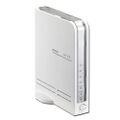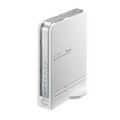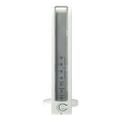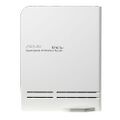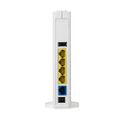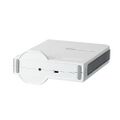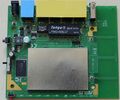You do not need an accout to report a problem with the wiki.
-
ASUS RT-N13U
bgn (N300) | |||||||||||||||||
|---|---|---|---|---|---|---|---|---|---|---|---|---|---|---|---|---|---|
| Wireless-N300 Router | |||||||||||||||||
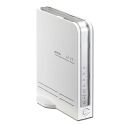 | |||||||||||||||||
| Homepage | |||||||||||||||||
| Wikipedia | |||||||||||||||||
| WikiDevi.wi-cat.ru | |||||||||||||||||
| 3rd Party Firmware | |||||||||||||||||
| dd-wrt | |||||||||||||||||
| OpenWrt | |||||||||||||||||
| Tomato any flavor |
Incompatible | ||||||||||||||||
| Gargoyle |
Status Unknown | ||||||||||||||||
| Platform | |||||||||||||||||
| Brand • Model • Rev |
ASUS RT-N13U | ||||||||||||||||
| FCC ID | |||||||||||||||||
| IC ID | |||||||||||||||||
| Type |
wireless router | ||||||||||||||||
| CPU1 |
Ralink RT3052 | ||||||||||||||||
| CPU1 Type |
MIPS 24KEc | ||||||||||||||||
| CPU1 Speed |
384 MHz | ||||||||||||||||
| Flash1 Chip |
Macronix MX29LV320DBTI-70G | ||||||||||||||||
| Flash1 Size |
4 MiB4,194,304 B <br />32,768 Kib <br />4,096 KiB <br />32 Mib <br />0.00391 GiB <br /> | ||||||||||||||||
| RAM1 Size |
32 MiB33,554,432 B <br />262,144 Kib <br />32,768 KiB <br />256 Mib <br />0.0313 GiB <br /> | ||||||||||||||||
| RAM1 Chip |
Samsung K4S281632K-UC60 x 2 | ||||||||||||||||
| ETH chip1 |
Ralink RT3052 | ||||||||||||||||
| Switch |
Ralink RT3052 | ||||||||||||||||
| Ethernet Port Count |
1-100MbE-WAN 4-100MbE-LAN | ||||||||||||||||
| Wired Standard |
IEEE 802.3i/3u | ||||||||||||||||
|
802dot11 OUI: none specified | |||||||||||||||||
| Stock bootloader |
U-Boot | ||||||||||||||||
| Expansion IF types |
USB 2.0 | ||||||||||||||||
| USB ports |
1 | ||||||||||||||||
| USB Hub Compatible |
Untested | ||||||||||||||||
| Power |
12 VDC, 1 A | ||||||||||||||||
| Connector type |
barrel | ||||||||||||||||
| Serial Port (UART) |
yes | ||||||||||||||||
| Other | |||||||||||||||||
|
Default SSID: ASUS (100 addl. devices) | |||||||||||||||||
| 3rd Party Firmware Support | |||||||||||||||||
| Retail | |||||||||||||||||
| Availability | End of Life | ||||||||||||||||
| FCC approval date | 05 June 2009 | ||||||||||||||||
| Country of manuf | China | ||||||||||||||||
| Radio 1 | |||||||||||||||||
| Chip1 |
Ralink RT3052 | ||||||||||||||||
| Wireless interface OUI |
none specified | ||||||||||||||||
| Antenna Connector Type |
none specified | ||||||||||||||||
| MIMO status |
2x2:2 | ||||||||||||||||
| Wireless Standard |
IEEE 802.11b/g/n | ||||||||||||||||
| 802.11n |
up to 300 Mbps | ||||||||||||||||
| 802.11g |
up to 54 Mbps | ||||||||||||||||
| 802.11b |
up to 11 Mbps | ||||||||||||||||
| WiFi Operating Frequency |
2.4 GHz | ||||||||||||||||
| |||||||||||||||||
| |||||||||||||||||
For a list of all currently documented Ralink chipsets with specifications, see Ralink.
For a list of all currently documented ASUS device with specifications, see ASUS.
- • 300 Mbps - 2SS 2.4GHz 802.11n (40MHz chan.) = N300 class
Overview
- EZ All-inOne Printer Sharing - USB Port
- EZ Switch - Switch your operation mode only ONE-TOUCH (Router, Repeater, AP)
- Enchanced Download Master - Download your files directly to the USB HDD when the computer is off.
- Diagnostic and Bandwidth Management Tools - Dr. Surf, EZQoS
Links of Interest
Flashing
| NOTE: During configuration or flashing a device, the only things that should be hooked to the device is the computer and power. |
Flashing dd-wrt
- Download asus-to-ddwrt.trx from ftp://www.dd-wrt.com/others/eko/BrainSlayer-V24-preSP2/06-12-10-r14594/Asus-RTN13U/
- Install Asus Utilities from here: http://support.asus.com.tw/download/download.aspx?product=11&model=RT-N13U&SLanguage=en-us
- Disable windows firewall.
- Power off the router, then keep the reset button pressed, and power on the router. Let go of the reset button once the power LED starts blinking.
- Open Asus firmware restoration utility, and flash asus-to-ddwrt.trx
- Wait 3 to 5 minutes after the flash is done, then reboot router. Now you should have dd-wrt running
- Check for recommended builds here.
Flashing OpenWrt
| This device is NOT RECOMMENDED for future use with OpenWrt due to low flash/ram. DO NOT BUY DEVICES WITH 4MB FLASH / 32MB RAM if you intend to flash an up-to-date and secure OpenWrt version onto it! See 4/32 warning for details. |
| This device does not have sufficient resources (flash and/or RAM) to provide secure and reliable operation. This means that even setting a password or changing simple network settings might not be possible any more, rendering the device effectively useless. See OpenWrt on 4/32 devices what you can do now. |
| OpenWrt support for this device has ended in 2022. 19.07.10 was the last official build for 4/32 devices. |
On the OpenWrt Wiki
OpenWrt Target: ramips
OpenWrt Subtarget: rt305x
OpenWrt Package architecture: mipsel_24kc
Support started version: 14.07
Current supported version: 22.03.7
Please insert instructions here
Upgrading
Updating DD-WRT
If dd-wrt is already on the router follow these instructions. If stock firmware is on the router follow the flashing instructions.
- Check for recommended builds here first.
- Set your computer to a static IP of 192.168.1.7. (or to whatever subnet the router is on) Disable all firewalls and security. Disable wireless on your computer and only have the router connected to the flashing computer by the ethernet cable between the two.
- Hard reset or 30/30/30 (If the router supports it, if not, reset to defults in the GUI) prior to flashing. Wait. Check for password page on re-login and change password.
- Flash firmware. You can use the webgui except if you have a belkin router. (For belkin use tftp.exe to flash)
- Wait...at least three minutes. Lights should return to normal. See important2, below. Failing to wait is how most people brick their routers.
- Do a power cycle of the router. (Unplug the cord, count to 30 and plug it back in.)
- Wait for the lights to return to normal usually about 2 minutes.
- Hard reset or 30/30/30 again (If the router supports it, if not, reset to defults in the GUI). Wait. Check for the password page and re-login to change the password. Then you can reconfigure your settings manually.
- Once configured set your computer back to autoIP and autoDNS.
Important1: This Hard reset or 30/30/30 works fine for Asus router, but you do have to power cycle after the reset.
Important2: After you flash the firmware, and before you do the hard reset, the router will be building some nvram settings. YOU MUST WAIT FOR THIS TO FINISH PRIOR TO DOING ANYTHING WITH THE ROUTER INCLUDING A HARD RESET. Usually, you can tell when this process is completed by the WAN light coming on, but it does take several minutes. Go have a beer. There are starting to be more and more people who BRICK their routers by not waiting until the nvram is rebuilt, PRIOR to doing a hard reset. YOU NEED TO WAIT!
Reverting
Refer this website...
http://klseet.com/index.php?option=com_content&view=article&id=79&Itemid=75
JTAG-Serial Info
JTAG
No JTAG
